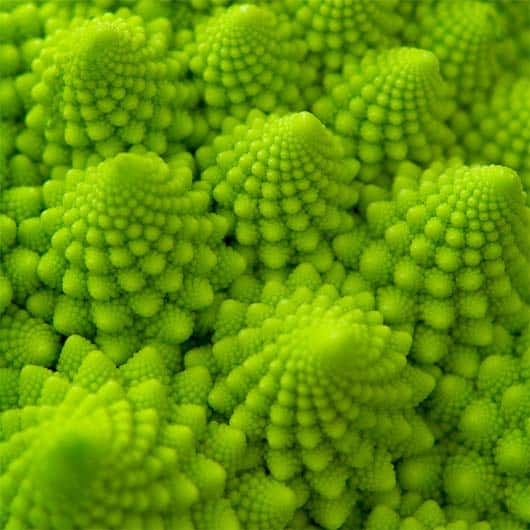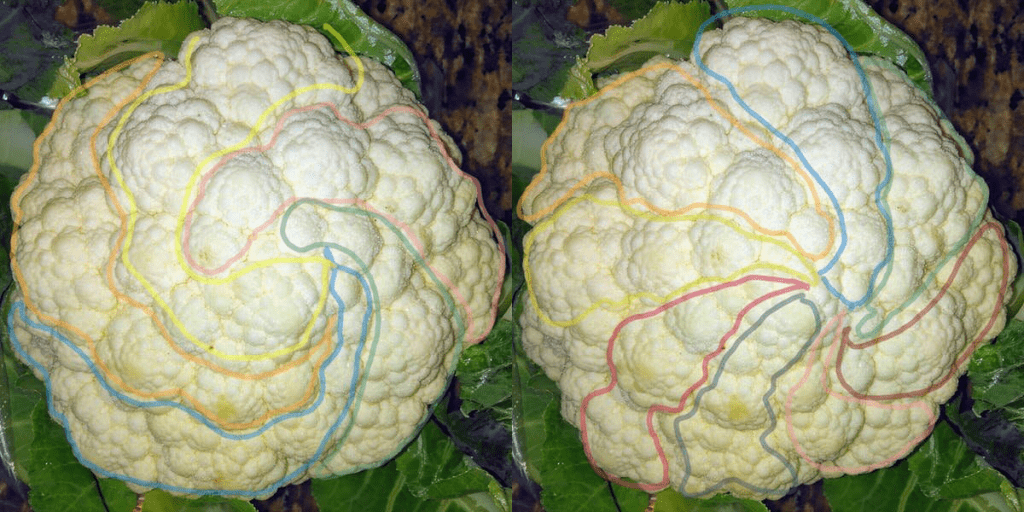
For at least two thousand years, humans have noticed that many plants grow leaves or flowers in a spiral pattern. Some of these plants, such as the cauliflower, take it a step further, growing spirals in self-repeating patterns commonly known as fractals. The resulting patterns are fascinating and intriguing, which begs the question: why do cauliflower and other fractal-like plants grow like this? French researchers at CNRS posed this exact question and identified an underlying genetic mechanism that produces fractal geometry.
Fractals were first described mathematically by Polish-born mathematician Benoit Mandelbrot in the 1970s. Their defining feature is having the same degree of non-regularity on all scales — looking up close or at the whole thing. They’re also both complicated and irregular. Clouds, mountains, coastlines, cauliflower plants, and even galaxies are all examples of natural fractals.
A small part of a cloud is strikingly similar to the whole thing. A pine tree is composed of branches that are composed of branches – which in turn are composed of branches. And a romanesco cauliflower’s pyramid buds accumulate along endless spirals, accommodating smaller buds that have the same geometry and so on. You get the idea.
If you count the spirals on a romanesco cauliflower — and Etienne Farcot, currently an assistant professor of mathematics at the University of Nottingham did just that — the values will tend to be those along the Fibonacci sequence, where the next number in the sequence is the sum of the previous two numbers before it. The typical cauliflower has five spirals growing clockwise and eight anticlockwise, for instance.

Farcot teamed up with François Parcy, a geneticist at CNRS in France, and Christophe Godin, an expert in plant modeling and computer science at the French Institute for Computational Science and Mathematics, to investigate why this mesmerizing cabbage grows its fractal buds.
After years of careful mathematical and genetic analysis, as well as computer modeling, the researchers concluded that the unusual spirals are the result of the cauliflower trying to grow flowers — and failing in the process.
The cauliflower has undifferentiated cells in its branched tips that divide and want to develop into other organs. These cells produce buds that should bloom into flowers but end up producing more buds instead, which make their own buds and so on. This may be due to a self-selected mutation during the domestication of wild cauliflower.
This self-repeating process happens early in the plant’s development and is due to the action of four genes that form a complex “gene network”. In this network, the expression of the four genes is constantly being changed such that some are turned on or off at specific times.
In order to validate this theory, the researchers designed two mathematical models. One describes the formation of the spirals seen in large cauliflower plants. The other describes the gene network in Arabidopsis, a related plant of the same family with the cauliflower and one of the most widely studied plants from a genetic standpoint.
After some trial and error, the researchers managed to reproduce cauliflower and romanesco plants on their computers exactly like they look in real life. Additionally, they tweaked the growth of Arabidopsis cauliflower mutant plant, effectively turning it into a miniature romanesco.
“It is amazing how complex nature is. The next time you have cauliflower for dinner, take a moment to admire it before you eat it,” Farcot said.
The findings were described in the journal Science.


